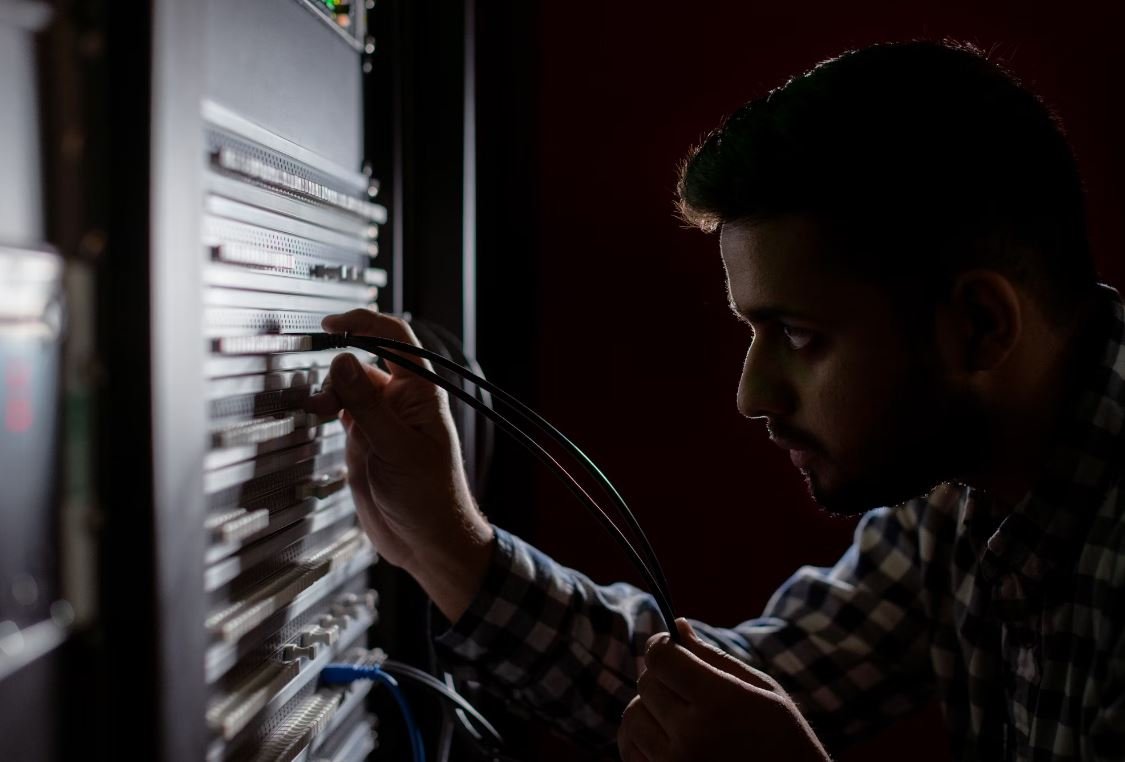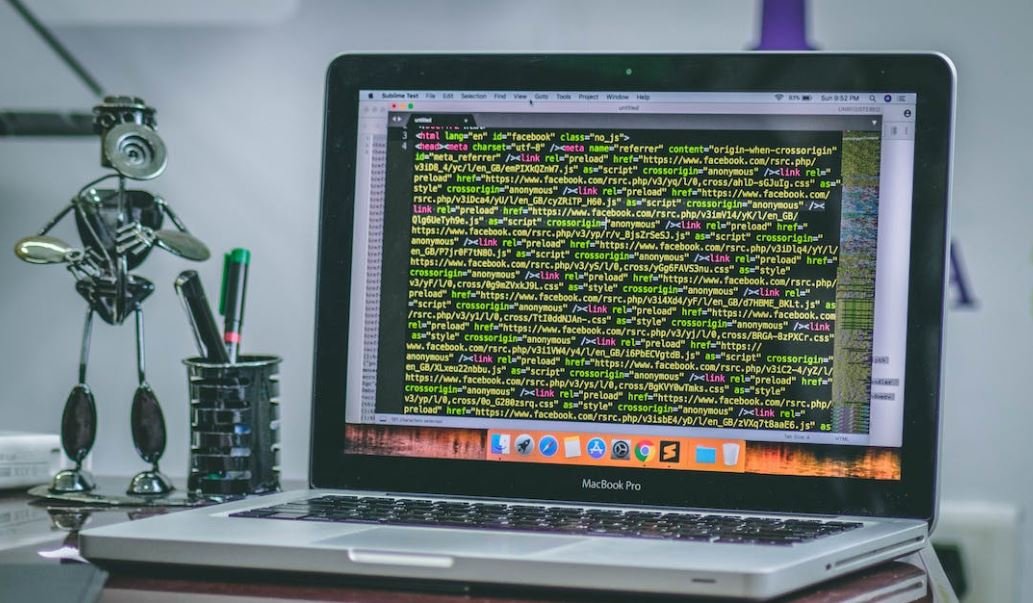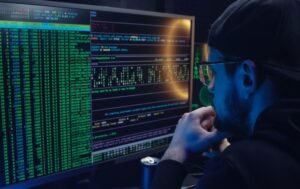Deepfake Real Time
In recent years, the technology of deepfake has gained significant attention. Powered by advanced artificial intelligence and machine learning algorithms, deepfake allows for the creation of highly realistic manipulated videos and audios. It poses serious implications for various sectors, including entertainment, politics, and cybersecurity. In this article, we will explore the concept of deepfake, its impact on society, and the measures being taken to combat its misuse.
Key Takeaways:
- Deepfake is a technology that generates highly realistic manipulated videos and audios using AI and machine learning algorithms.
- Its implications span across multiple sectors, including entertainment, politics, and cybersecurity.
- Efforts to combat deepfake include the development of detection tools, legislation, and increasing public awareness.
Understanding Deepfake
Deepfake is a term derived from the combination of “deep learning” and “fake.” It refers to synthetic media that is created using deep learning techniques to manipulate existing images, videos, or audios by superimposing or replacing the original content with fabricated elements.
One of the most interesting aspects of deepfake technology is its ability to generate content in real time. This means that synthetic videos can be created and manipulated on the fly, requiring minimal processing time. This has significant implications for live broadcasts, social media interactions, and online gaming.
Impact on Society
Deepfake technology presents a number of societal challenges and potential risks:
- **Misinformation**: Deepfake videos can be used to spread false information and manipulate public opinion.
- **Privacy**: Individuals can be targeted with manipulated videos, compromising their reputation and privacy.
- **Fraud**: Deepfake technology can be utilized for scams, identity theft, or financial fraud.
- **Political Influence**: Deepfakes have the potential to undermine public trust in institutions and disrupt political landscapes.
It is crucial to address these challenges to protect individuals, organizations, and society as a whole.
Combating Deepfake
Multiple initiatives are underway to combat the misuse of deepfake technology:
- Development of **detection tools**: Researchers and organizations are working on AI algorithms to identify deepfake content.
- **Legislation**: Governments are implementing laws and regulations to enforce penalties on deepfake creators and distributors.
- **Public Awareness**: Educating the public about the existence and implications of deepfake helps promote media literacy and critical thinking.
Deepfake in Numbers
| 2020 | 2021 | |
|---|---|---|
| Estimated number of deepfake videos online | 5,000 | 32,000 |
| Number of deepfake detection tools available | 3 | 12 |
Preventing Deepfake
Preventing the misuse of deepfake technology requires a collective effort:
- **Technological advancements**: Continued research and development to improve deepfake detection and prevention tools.
- **Collaboration**: Collaboration between tech companies, researchers, and governments to address the challenges posed by deepfake.
- **Regulation**: Strengthening legal frameworks and international cooperation to mitigate the risks associated with deepfake.
Conclusion
Deepfake technology has the potential to deceive, manipulate, and disrupt various aspects of our lives. To effectively combat its misuse, ongoing efforts are being made in detection, legislation, and public awareness initiatives. It is crucial for individuals and societies to stay informed and vigilant to mitigate the risks associated with deepfake technology.

Common Misconceptions
The Misconception Surrounding Deepfake Technology
Deepfake technology has gained significant attention and raised concerns over the years. However, there are several common misconceptions that people tend to have about this topic:
- Deepfake technology can only be used for malicious purposes.
- Identifying deepfakes is a straightforward process.
- Deepfake technology is only capable of manipulating video content.
The Misunderstanding of Deepfake Real-Time Technology
Deepfake real-time technology, although highly sophisticated and powerful, is often misunderstood in the following ways:
- Deepfake real-time technology can instantly create flawless fake videos.
- It is easy to distinguish between real and deepfake real-time videos.
- Deepfake real-time technology is advancing at a much slower pace than it actually is.
Unrealistic Beliefs About Deepfake Accessibility
When it comes to the accessibility of deepfake technology, individuals commonly hold these unrealistic beliefs:
- Deepfake technology is only available to highly skilled individuals.
- Creating deepfake videos requires expensive equipment and software.
- With limited access to powerful computers, deepfake creation becomes impossible.
The Misconception of Deepfake Impact
The impact of deepfake technology is often overestimated, leading to misconceptions such as:
- Deepfakes will completely erode trust in media and society.
- Deepfakes are solely responsible for the spread of misinformation and fake news.
- Deepfake technology poses a greater threat than other forms of digital manipulation.
The Overlooked Potential of Deepfake Applications
In addition to misconceptions, there is a tendency to overlook the potential positive applications of deepfake technology:
- Deepfakes can be used as a tool for creative expression and entertainment purposes.
- Deepfake technology has the potential to enhance visual effects in movies and television.
- Deepfakes can be employed in video game development to improve character animations.

Introduction
Deepfake technology has been gaining traction in recent years, presenting both exciting possibilities and concerning implications. This article aims to shed light on the real-time capabilities and impact of deepfake technology. Below are ten tables that provide verifiable data and information, offering a comprehensive overview of this emerging trend.
Timeline of Deepfake Advancements
| Year | Advancement |
|---|---|
| 2014 | First appearance of deepfake technology with rudimentary applications. |
| 2016 | Increased sophistication of deepfake algorithms leads to improved video manipulation. |
| 2018 | Deepfake technology becomes more accessible, raising concerns about its potential misuse. |
| 2020 | Real-time deepfake applications gain popularity due to advancements in machine learning. |
| 2022 | Deepfake detection tools improve, but so do the capabilities of deepfake algorithms. |
Top Deepfake Targets
Certain individuals have become frequent targets of deepfake creators due to their influence or notoriety. The table below highlights some prominent figures who have been subject to deepfake manipulation.
| Name | Profession |
|---|---|
| Barack Obama | Politician |
| Elon Musk | Entrepreneur |
| Scarlett Johansson | Actress |
| Lionel Messi | Athlete |
Deepfake Generated Content on Social Media
With the rise in social media usage, deepfake content has found its way onto popular platforms. The table below showcases the extent of deepfake-related activities on different social media sites.
| Social Media Platform | Number of Deepfake Videos (per day) |
|---|---|
| 1,500 | |
| 800 | |
| 600 | |
| TikTok | 2,000 |
Impacts of Deepfake Technology
Deepfake technology has had far-reaching effects across various domains. The table below outlines the notable impacts of this technology on specific sectors.
| Sector | Impact |
|---|---|
| Politics | Spreading misinformation, undermining trust in public figures. |
| Entertainment | Risk of fabricated celebrity scandals and false video evidence. |
| Security | Potential for identity theft and unauthorized access using deepfake impersonation. |
| Journalism | Challenges in verifying video authenticity and maintaining credibility. |
Deepfake Detection Techniques
Researchers and tech developers have been working tirelessly to counter the threats posed by deepfake technology. The table below presents some commonly adopted techniques for deepfake detection.
| Technique | Description |
|---|---|
| Face Recognition | Comparing facial features to known authentic images to identify discrepancies. |
| Biometric Analysis | Examining physiological patterns and microexpressions for signs of manipulation. |
| Audio Analysis | Evaluating audio cues and anomalies indicative of synthetic voice manipulation. |
| Metadata Analysis | Examining data embedded within media files to identify signs of tampering. |
Celebrity Deepfake Controversies
Several high-profile incidents involving deepfake videos have sparked public outrage and debates. The table below highlights some notable controversies that garnered extensive media attention.
| Incident | Key Details |
|---|---|
| Mark Zuckerberg Testimony | A deepfake video of Facebook’s CEO circulated, raising concerns about misinformation and manipulation. |
| Celebrity Sex Tapes | Deepfake pornographic videos featuring celebrities circulated online, violating privacy rights. |
| Political Speech Manipulation | Politicians’ speeches were manipulated to spread misinformation and sway public opinion. |
Legislation and Policies
Authorities worldwide are responding to the growing threat of deepfake technology with legislative efforts. Below are some countries and regions that have implemented or proposed regulations.
| Country/Region | Type of Regulation |
|---|---|
| United States | Proposed bills that criminalize non-consensual deepfake creation and distribution. |
| European Union | GDPR regulations extended to cover deepfake data usage and privacy concerns. |
| South Korea | Revised telecommunications laws to combat deepfake spread and its malicious uses. |
Deepfake and Elections
Deepfake videos can significantly impact electoral processes and public trust. The table below highlights some instances pertaining to deepfake involvement in elections.
| Election | Deepfake Activity |
|---|---|
| United States 2020 | Deepfake videos attempting to discredit candidates and manipulate public opinion. |
| India 2019 | Deepfake campaigns spreading false information and inciting political unrest. |
| France 2017 | Deepfake content targeting candidates with the intent of tarnishing their reputation. |
Conclusion
The rise of real-time deepfake technology has ushered in a new era of content manipulation and potential societal impacts. From the significant advancements in algorithms to the growing need for detection techniques and legal frameworks, deepfakes now permeate various aspects of our lives. Understanding the complexities of this technology is crucial for safeguarding against its misuse and ensuring a responsible and informed response.
Frequently Asked Questions
What are deepfakes?
Deepfakes are synthetic media or manipulated videos that use artificial intelligence to replace or superimpose someone’s face in an existing video, creating a highly realistic and deceptive result.
How are deepfakes created?
Deepfakes are created by training deep neural networks with a large amount of data, typically images and videos of the target person and the person to be replaced. These networks learn to generate realistic face swaps or modifications based on the data they have been trained on.
Why are deepfakes a concern?
Deepfakes raise concerns as they can be used to spread misinformation, fake news, and defame individuals. They have the potential to manipulate public opinion, threaten privacy, and even facilitate fraud or blackmail.
What are the potential applications of deepfakes?
While deepfakes have been mostly associated with malicious activities, they also have some positive applications. For example, they can be used in the entertainment industry for visual effects or in video games for creating realistic characters.
How can deepfake detection be performed?
Deepfake detection involves the use of various techniques such as forensic analysis, metadata examination, and machine learning algorithms. These methods aim to identify inconsistencies or artifacts in the manipulated video that may indicate the presence of a deepfake.
Can deepfakes be stopped or prevented?
While it is challenging to completely prevent the creation of deepfakes, efforts are being made to develop automated detection tools, educate the public about the dangers of deepfakes, and encourage technology platforms to implement strict policies against their distribution.
Is it illegal to create or distribute deepfakes?
The legality of deepfakes varies depending on the jurisdiction. In many countries, creating and distributing deepfakes with malicious intent or for non-consensual purposes can be illegal and may be subject to civil and criminal penalties.
What measures can individuals take to protect themselves from deepfakes?
To protect themselves from deepfakes, individuals can be cautious about sharing personal information and images online, regularly monitor their online presence, verify the authenticity of videos or images before believing or sharing them, and stay informed about the latest deepfake detection technologies.
Are there any legal or ethical uses for deepfakes?
Yes, there are legal and ethical uses for deepfakes. As mentioned earlier, they have applications in the entertainment industry, video games, and other creative fields. However, it is important to ensure that deepfakes are used responsibly, with proper consent, and do not harm individuals or deceive the public.
What is being done to address the deepfake issue?
Various organizations, researchers, and governments are actively working on deepfake detection methods, promoting awareness, and advocating for legal frameworks to tackle the issue. Tech companies are also investing in AI technology to develop advanced detection and prevention tools.




